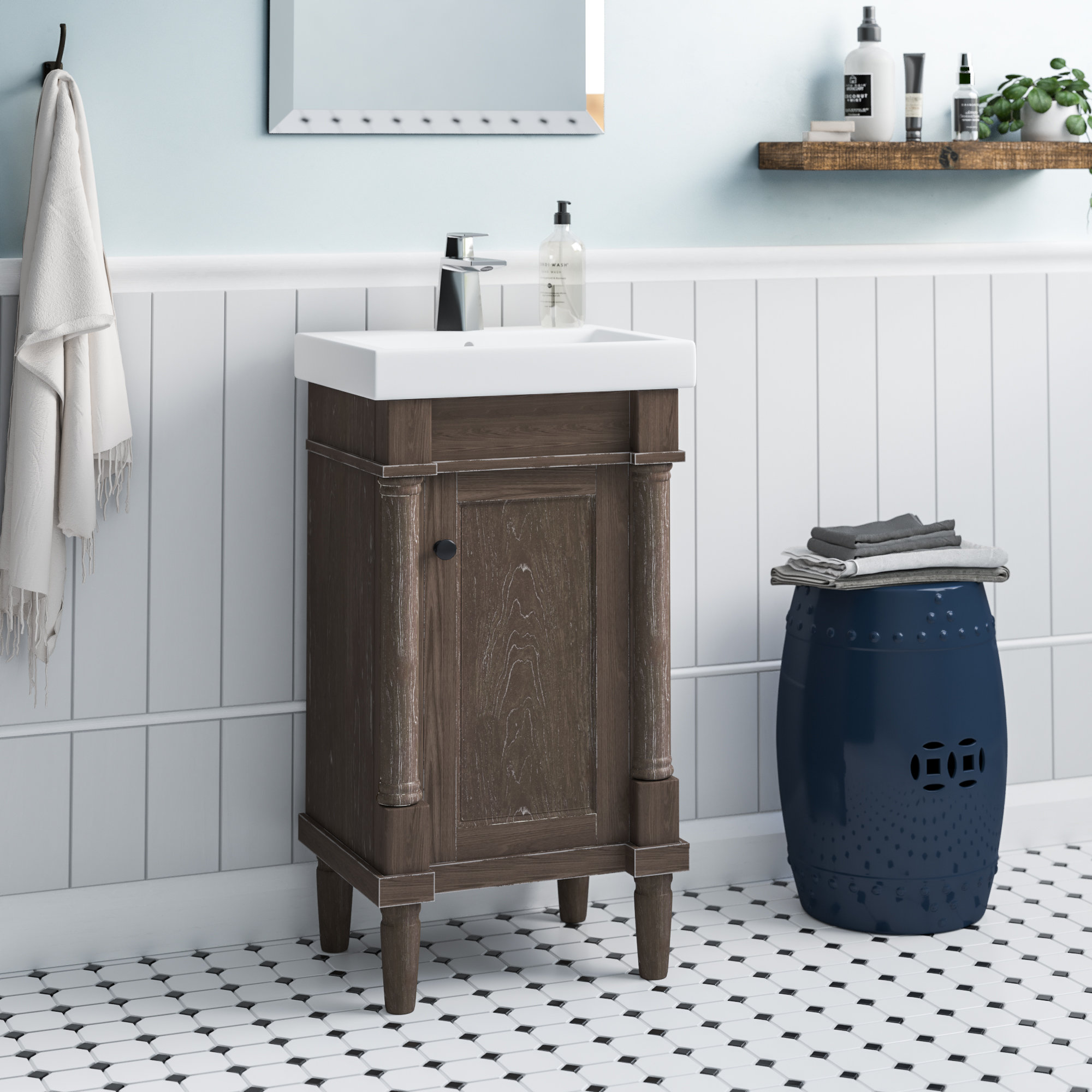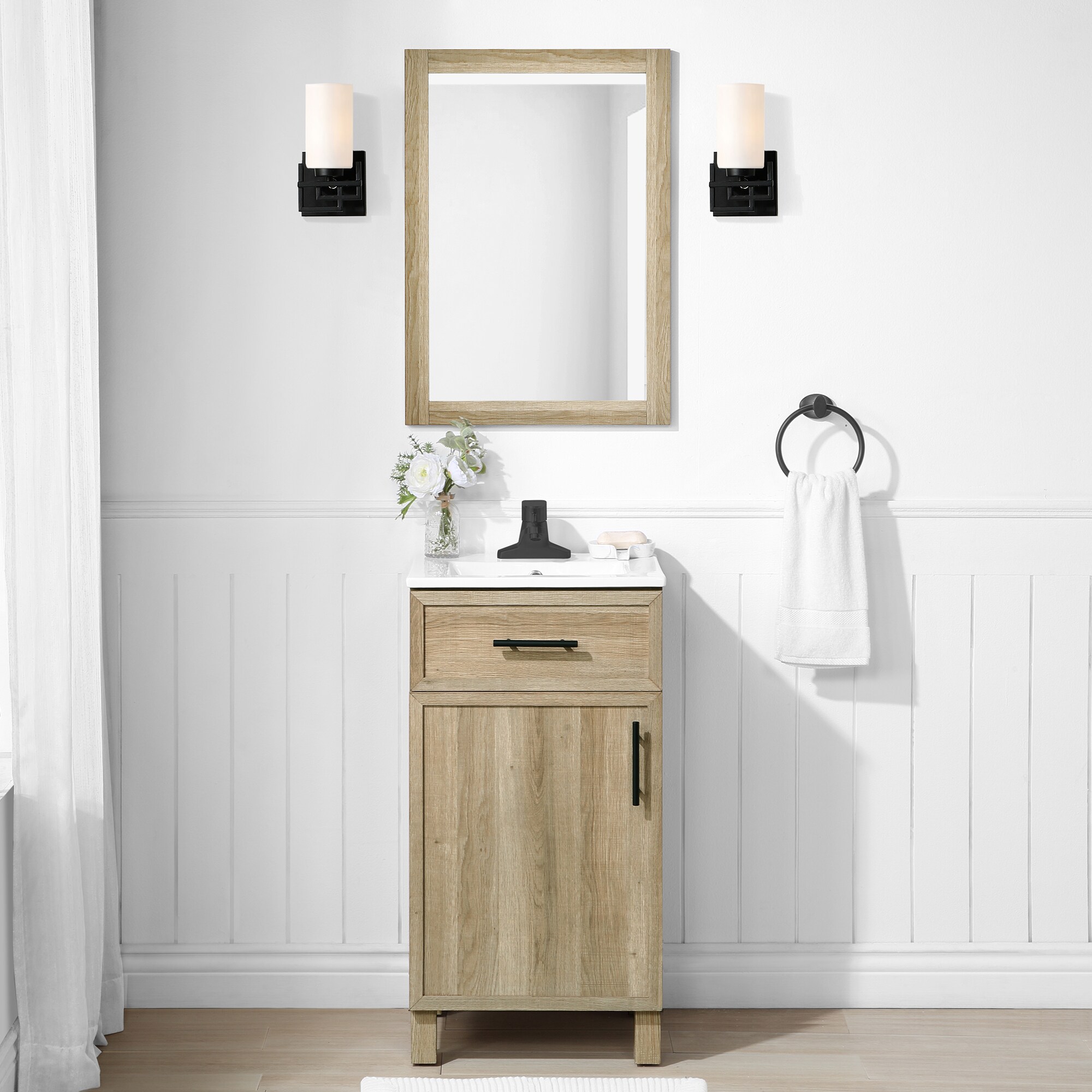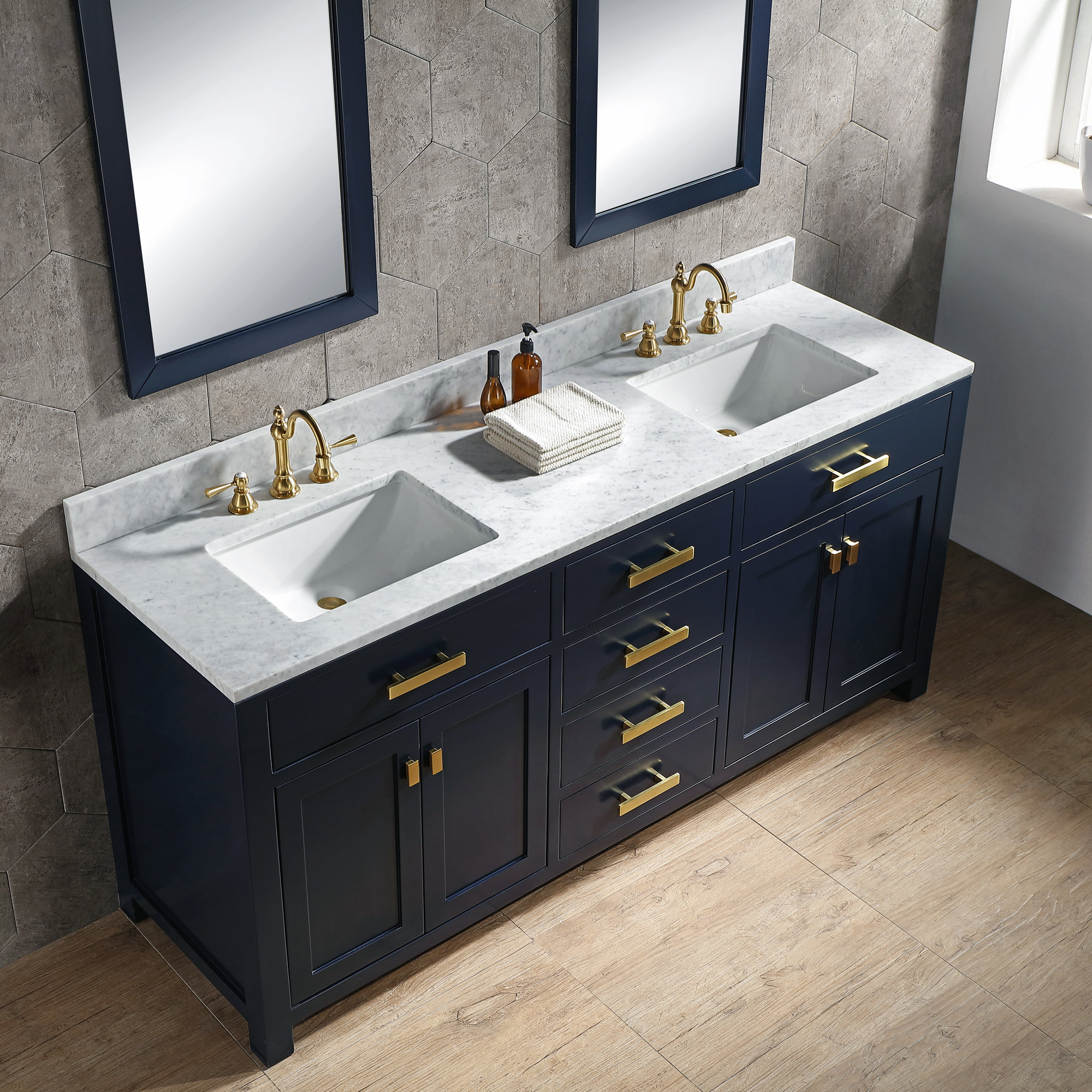Choosing the Right 18 Inch Vanity for Your Bathroom

An 18-inch vanity is a popular choice for smaller bathrooms, offering a compact footprint without sacrificing style or functionality. When selecting an 18-inch vanity, it’s crucial to consider several factors to ensure you choose the right one for your needs and preferences.
Vanity Materials
The material of your vanity significantly impacts its durability, aesthetics, and price. Here are some common vanity materials and their pros and cons:
- Wood: Natural wood vanities offer a timeless elegance and can be stained or painted to match your bathroom decor. They are generally durable and can be refinished over time. However, wood vanities are typically more expensive than other materials and require regular maintenance to prevent scratches and water damage.
- Laminate: Laminate vanities are a budget-friendly option that offers a wide range of styles and colors. They are resistant to scratches and moisture, making them a practical choice for bathrooms. However, laminate vanities can be less durable than wood and may not be as aesthetically pleasing.
- Acrylic: Acrylic vanities are known for their sleek, modern look and are highly resistant to moisture and stains. They are also easy to clean and maintain. However, acrylic vanities can be more susceptible to scratches and may not be as durable as wood or laminate.
Sink Style and Configuration
The sink style and configuration are crucial considerations for an 18-inch vanity. Choosing the right combination ensures sufficient space for washing and functionality.
- Undermount Sinks: Undermount sinks are seamlessly integrated into the countertop, creating a clean and modern look. They are also easier to clean as there are no edges or seams for dirt to accumulate. However, undermount sinks may require a deeper countertop for installation.
- Top-Mount Sinks: Top-mount sinks are installed on top of the countertop, providing a more traditional look. They are typically less expensive than undermount sinks and easier to install. However, they may have more exposed edges and can be harder to clean.
- Vessel Sinks: Vessel sinks are placed on top of the countertop and offer a unique and decorative look. They are often made of ceramic, glass, or stone and can add a touch of elegance to your bathroom. However, vessel sinks can take up more counter space and may be more difficult to clean.
Vanity Design
The design of your vanity should complement the overall style of your bathroom. Consider the following factors:
- Style: Do you prefer a traditional, modern, or contemporary look? Choose a vanity that aligns with your bathroom’s aesthetic.
- Color: Select a vanity color that complements your bathroom’s walls, flooring, and fixtures. Neutral colors like white, gray, and beige are versatile and can create a sense of spaciousness.
- Details: Consider the details of the vanity, such as the cabinet doors, drawer pulls, and trim. These elements can add a touch of personality to your bathroom.
Essential Features
When choosing an 18-inch vanity, consider these essential features:
- Storage Space: An 18-inch vanity may have limited storage space, so prioritize features that maximize storage capacity. Look for vanities with drawers, shelves, or cabinets to accommodate your bathroom essentials.
- Countertop Material: The countertop material should be durable, easy to clean, and resistant to moisture and stains. Popular countertop materials for vanities include granite, quartz, and laminate.
- Hardware: Choose hardware that complements the style of your vanity and is easy to use. Consider the finish of the hardware, such as chrome, nickel, or bronze.
Installing an 18 Inch Vanity: 18 Inch Width Bathroom Vanity

Installing an 18 inch vanity can be a rewarding DIY project, adding a touch of elegance and functionality to your bathroom. It involves a few steps, and with the right tools and approach, you can achieve a professional-looking result.
Tools and Materials Needed
Before you start, ensure you have the necessary tools and materials for a smooth installation process.
- Vanity: An 18 inch vanity that fits your bathroom space.
- Sink: A sink that complements the vanity.
- Faucet: A faucet that matches your style and bathroom decor.
- Plumbing Supplies: Including P-trap, drain pipe, and supply lines.
- Level: To ensure the vanity is installed straight.
- Measuring Tape: To accurately measure the space.
- Pencil: To mark the wall for the vanity.
- Drill: To create holes for the vanity’s mounting brackets.
- Screwdriver: To secure the vanity and other components.
- Caulk: To seal gaps between the vanity and the wall.
- Safety Glasses: To protect your eyes during installation.
- Work Gloves: To protect your hands.
Preparing for Installation
Before starting the installation, prepare the bathroom for the project.
- Clear the Area: Remove any obstacles or furniture from the area where you’ll be installing the vanity.
- Turn Off Water Supply: Locate the shut-off valve for the water supply to the sink and turn it off. This prevents water leaks during installation.
- Disconnect Existing Plumbing: If you’re replacing an old vanity, disconnect the existing plumbing connections. This involves disconnecting the water supply lines and the drain pipe.
- Remove Old Vanity: Carefully remove the old vanity, taking care not to damage the surrounding walls or flooring.
Installing the Vanity
Now, it’s time to install the vanity.
- Position the Vanity: Place the vanity in the desired location and ensure it’s level. Use the level to adjust the vanity’s position until it’s perfectly horizontal.
- Mark Mounting Points: Once the vanity is in position, mark the wall where the mounting brackets will be attached. Use a pencil to mark the exact location of the holes.
- Drill Pilot Holes: Using a drill, create pilot holes at the marked locations. The pilot holes will help prevent the drill bit from slipping and ensure accurate drilling.
- Secure Mounting Brackets: Attach the vanity’s mounting brackets to the wall using the appropriate screws. Ensure the brackets are securely fastened to the wall studs for optimal support.
- Attach Vanity to Brackets: Carefully lift the vanity and align it with the mounting brackets. Secure the vanity to the brackets using the provided screws or bolts.
Connecting Plumbing
The next step is to connect the plumbing to the vanity.
- Connect Water Supply Lines: Connect the water supply lines to the faucet and the shut-off valve. Ensure the connections are tight and leak-free. Use plumber’s tape on the threads to prevent leaks.
- Install the Drain Pipe: Connect the drain pipe to the vanity’s drain outlet and the P-trap. Secure the connections with the appropriate nuts and washers. Ensure the drain pipe is properly sloped to allow for proper drainage.
- Test for Leaks: Turn the water supply back on and carefully check for any leaks. If you notice any leaks, tighten the connections or use plumber’s tape to seal them.
Finishing Touches
After connecting the plumbing, finish the installation by adding the final touches.
- Install Sink: Install the sink on the vanity countertop. Use the appropriate sealant or adhesive to secure the sink to the countertop.
- Install Faucet: Install the faucet on the sink. Ensure the faucet is properly aligned and secured. Tighten the faucet’s connections to prevent leaks.
- Caulk Gaps: Apply caulk to seal any gaps between the vanity and the wall. This will prevent water from seeping behind the vanity and causing damage.
- Clean Up: Clean up any debris or spills from the installation process.
Troubleshooting Common Installation Problems, 18 inch width bathroom vanity
Here are some tips for troubleshooting common installation problems:
- Vanity is Not Level: If the vanity is not level, adjust the vanity’s position or use shims to level it. Ensure the vanity is perfectly horizontal before securing it to the wall.
- Leaks: If you notice leaks, check the connections for tightness. Use plumber’s tape to seal any leaks. Ensure the drain pipe is properly sloped for proper drainage.
- Vanity is Loose: If the vanity is loose, check the mounting brackets and ensure they are securely attached to the wall studs. Tighten the screws or bolts that secure the vanity to the brackets.
Maximizing Space with an 18 Inch Vanity

An 18-inch vanity might seem small, but with clever design and storage solutions, you can create a functional and stylish bathroom that doesn’t feel cramped. Here’s how to make the most of your limited space.
Creating a Functional and Stylish Bathroom Layout
The key to a functional bathroom with an 18-inch vanity is to maximize every inch of space. Consider these layout ideas:
- Open Floor Plan: Keep the space around the vanity open by opting for a wall-mounted toilet and a shower stall instead of a tub. This creates a sense of spaciousness and makes the room feel larger.
- Vertical Storage: Utilize the vertical space above the vanity by installing a mirror cabinet or open shelving. This allows you to store toiletries and other bathroom essentials without taking up valuable floor space.
- Floating Shelves: Install floating shelves on the walls to display decorative items or store towels, creating a visually appealing and functional storage solution.
- Corner Storage: Utilize corner space with a small corner shelf or a corner cabinet to maximize storage and create a visually appealing corner.
Maximizing Storage Space within an 18 Inch Vanity
Even though an 18-inch vanity has limited space, there are several ways to maximize storage:
- Utilize Drawers: Choose a vanity with multiple drawers to organize toiletries and other bathroom essentials. Drawer dividers can help create more order and separate items.
- Utilize Shelves: If your vanity has shelves, use them to store towels, extra toiletries, or other items that you don’t use daily.
- Vertical Storage: Use vertical space within the vanity by installing a small shelf or a pull-out drawer organizer. This helps keep items organized and accessible.
- Utilize the Back of the Door: Hang a small over-the-door organizer on the back of the vanity door to store additional items like hair styling tools or cleaning supplies.
Innovative Storage Solutions for Small Bathrooms
- Wall-Mounted Storage: Consider wall-mounted storage solutions such as shelves, baskets, and organizers. These can be installed at different heights to make use of vertical space.
- Over-the-Toilet Storage: Install a shelf or a storage tower over the toilet to store towels, toiletries, or other bathroom essentials.
- Under-Sink Storage: Make use of the space under the sink by installing a pull-out drawer or a storage rack. This allows you to store cleaning supplies, extra toiletries, or other items that you don’t use daily.
- Rolling Cart: A rolling cart can be a great way to add storage and organization to a small bathroom. You can keep it near the vanity or move it around as needed.
Creating a Visually Appealing and Spacious Bathroom Design
- Light Colors: Use light colors on the walls and floors to create a sense of spaciousness.
- Mirrors: Mirrors can make a small bathroom feel larger by reflecting light and creating the illusion of more space.
- Minimalist Decor: Keep the decor simple and minimalist to avoid clutter and create a clean and spacious feel.
- Open Floor Plan: Avoid placing furniture or other obstructions in the middle of the room. This will help create a sense of flow and make the space feel larger.
